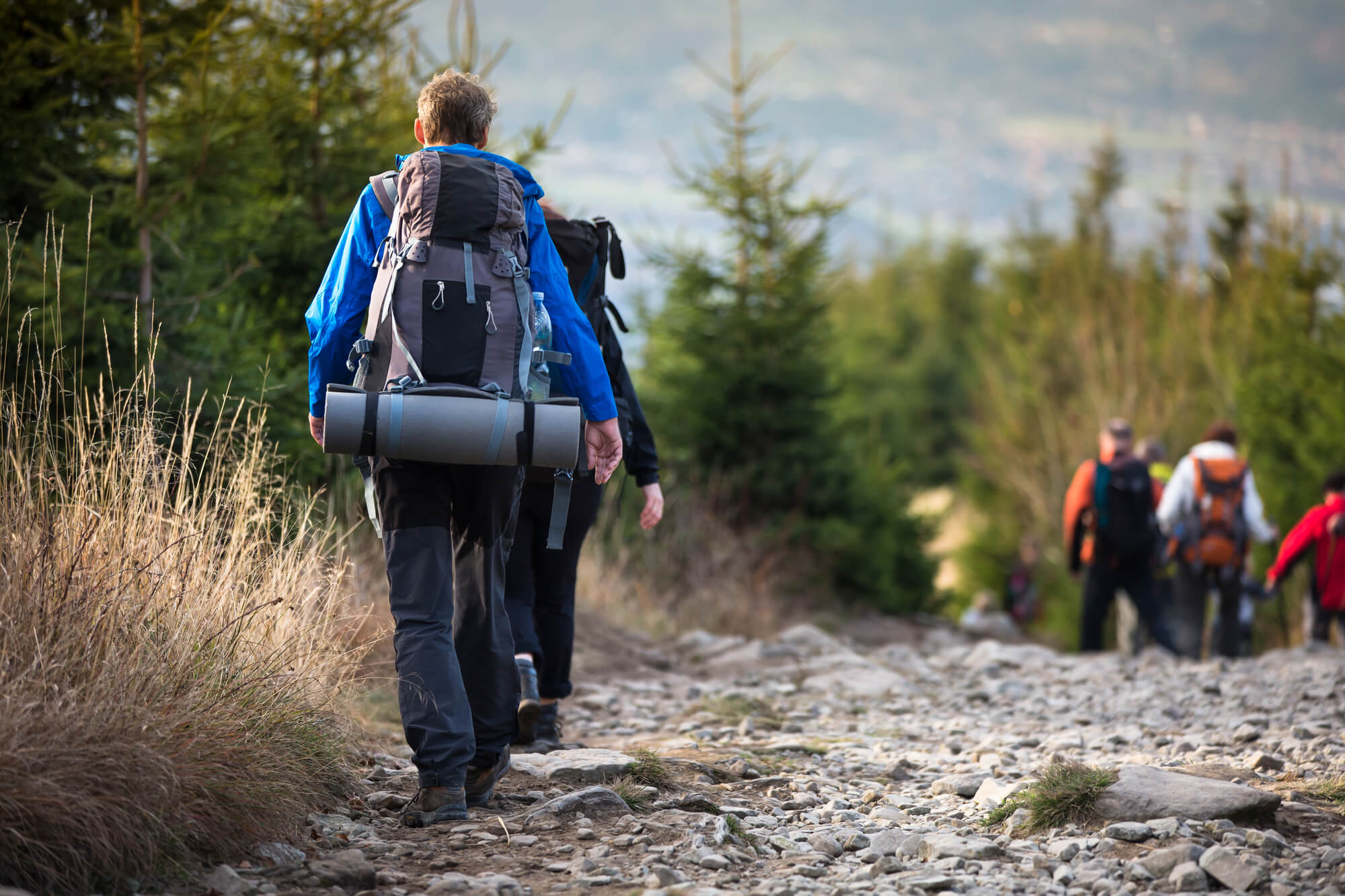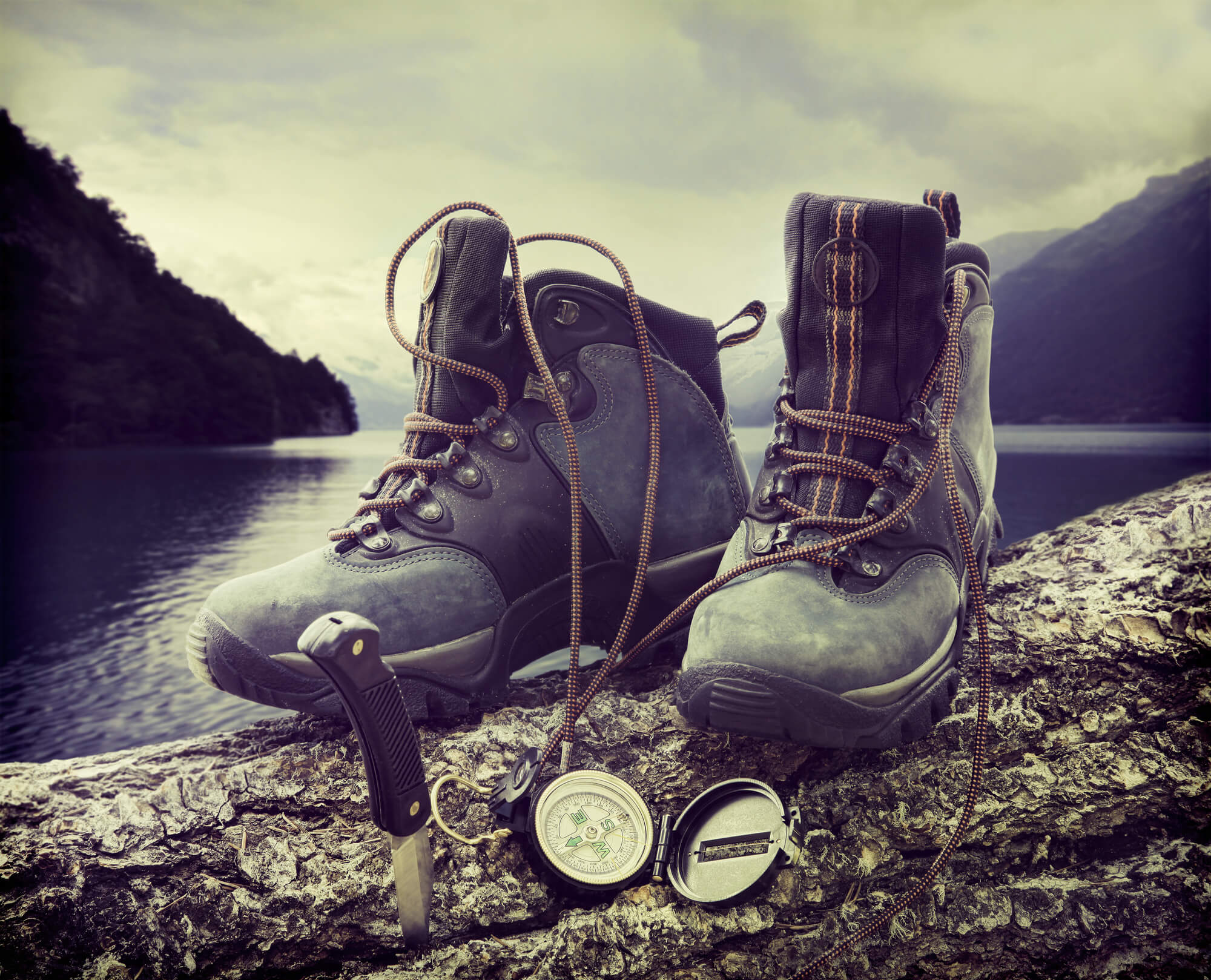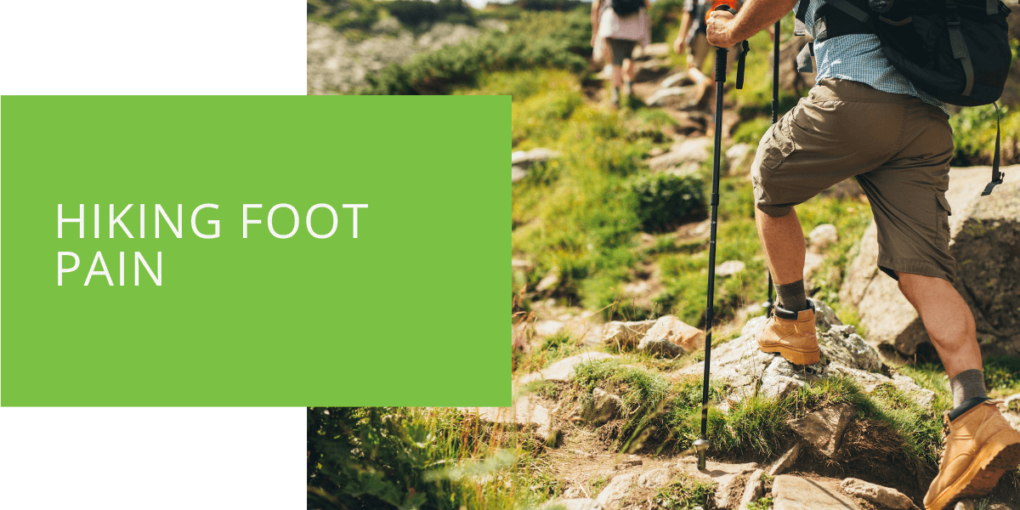Hiking Foot Pain: Causes, Prevention & Treatment
Hiking is an excellent way to enjoy the great outdoors, but it can be a painful experience if you're not prepared for the impact it can have on your feet. Hiking foot pain is a common complaint among hikers, but fortunately, there are steps you can take to prevent and treat it.
This comprehensive guide will discuss the causes of hiking foot pain and how to prevent it. We'll also provide tips for treating foot pain if you experience it on the trail. So let's hit the trail and get started!
Common Causes of Hiking Foot Pain
Various factors, including ill-fitting shoes, overuse, and underlying medical conditions, can cause hiking foot pain. It's essential to identify the cause of your pain to prevent it from worsening and to seek medical attention if necessary.
Ill-Fitting Shoes
Wearing ill-fitting shoes is one of the most common causes of hiking foot pain. Wearing too tight or loose shoes can cause blisters, sore feet, and even plantar fasciitis. When shopping for hiking boots, it's important to try on several pairs to find the perfect fit. A good fit will allow your toes to move freely in the toe box, provide adequate support for your arches, and prevent your heel from slipping.
Overuse
Overuse is another common cause of hiking foot pain. When you hike long distances, the repetitive motion can cause inflammation in your connective tissue, calf muscle, and ankle. Overuse injuries are often the result of doing too much too soon, so it's essential to increase your activity levels to avoid injury gradually.

Underlying Medical Conditions
Underlying medical conditions can also cause foot pain during hiking. Here are some foot conditions that hikers may encounter, along with their causes, symptoms, and treatments:
Plantar Fasciitis
Plantar fasciitis is a common condition that causes pain in the heel and arch of the foot. It occurs when the plantar fascia, a band of tissue that runs from the heel to the toes, becomes inflamed. Plantar fasciitis can be caused by overuse, flat feet, or wearing shoes with poor arch support.
Symptoms of plantar fasciitis include pain in the heel and arch of the foot, especially in the morning or after long periods of standing or walking. Treatment for plantar fasciitis includes rest, stretching exercises, and wearing shoes with good arch support. Custom orthotics may also be recommended to provide additional support for the foot.
Flat Feet
Flat feet is a condition where the arch is flattened, causing the entire foot to touch the ground when standing. Flat feet can be caused by genetics, overuse, or injury. People with flat feet may experience foot pain during hiking, especially if they're not wearing shoes with good arch support.
Symptoms of flat feet include pain and fatigue in the feet and legs, especially during or after physical activity. Treatment for flat feet includes wearing shoes with good arch support, custom orthotics, and stretching exercises to improve flexibility.
Blisters
Blisters are a common foot condition that can occur during hiking. They're caused by friction between the skin and the inside of the shoe. Blisters can be painful and can make hiking uncomfortable.
Symptoms of blisters include a painful, fluid-filled sac on the skin. Treatment for blisters includes draining the blister, covering it with a bandage or moleskin, and wearing shoes that fit properly.
Toenail Injuries
Toenail injuries can occur during hiking, especially if your shoes are too tight or your toenails are too long. Toenail injuries can be painful and can lead to infection if not treated properly.
Symptoms of toenail injuries include pain, swelling, and redness around the affected toenail. Treatment for toenail injuries includes keeping the area clean and dry, wearing shoes with a roomy toe box, and trimming your toenails straight across.
By understanding the causes, symptoms, and treatments of these foot conditions, hikers can take steps to prevent and treat pain during hiking. Remember to wear shoes with good arch support, stretch before and after hiking, and promptly take care of any foot injuries or conditions to prevent them from worsening.

Prevention of Hiking Foot Pain
Preventing hiking foot pain is key to enjoying a long day on the trail. Here are some tips for preventing pain during hiking:
Footwear
Wearing the proper footwear is essential for preventing foot pain during hiking. Invest in good hiking shoes or boots that fit properly and provide adequate support for your feet. Choose shoes or boots designed for the type of hiking you'll do, whether a short day hike or a multi-day backpacking trip. You may also want to wear toe socks to prevent blisters and hot spots.
Here are some additional tips on choosing the right hiking shoes based on the type of hiking you'll be doing:
- Day Hiking: Hiking shoes are a good choice for short hikes on well-maintained trails. They're lightweight, flexible, and provide good traction. Look for shoes with a low-cut design that allows for a full range of motion in your ankle. Choose shoes with a sturdy sole that supports your arches and cushioning for your heels.
- Backpacking: For multi-day backpacking trips, hiking boots are a better choice. They offer more support and protection for your feet and ankles, which is important when carrying a heavy backpack. Look for mid-cut or high-cut boots that provide additional ankle support. Choose boots with a waterproof and breathable membrane to keep your feet dry and comfortable in all types of weather.
- Off-Trail Hiking: Hiking boots with a stiff sole and aggressive tread are essential for hiking on rugged terrains, such as rock scrambles or steep inclines. Look for boots with a high-cut design that provides excellent ankle support. Choose boots with a durable upper made of leather or synthetic materials that can withstand rough terrain.
- Wet Conditions: Waterproof hiking boots are a must for hiking in wet conditions, such as stream crossings or muddy trails. Look for boots with a Gore-Tex or similar membrane that provides waterproofing and breathability. Choose boots with a non-slip sole that provides excellent traction on wet surfaces.
In addition to these tips, trying on several pairs of shoes or boots is important to find the right fit. Make sure to wear the same socks you'll wear on your hike, and walk around the store to get a feel for the shoes. If possible, try on shoes when your feet are more swollen at the end of the day, as they will be during a long hike.
Following these tips, you can choose the right hiking shoes for your specific needs and terrain and prevent foot pain during your hike.

Conditioning and Training
Conditioning and training your feet for hiking can help prevent foot pain. Start by gradually increasing your activity levels, such as walking or running, to prepare your feet for the impact of hiking. You can also do exercises to strengthen your feet, such as calf raises and toe curls. Stretching before and after hiking can also help prevent pain.
Foot Care
Taking care of your feet is essential for preventing foot pain during hiking. Here are some tips on how to take care of your feet before, during, and after hiking:
Before Hiking
- Trim your toenails: Long toenails can rub against the front of your shoes and cause blisters or ingrown toenails. Trim your toenails straight across and avoid cutting them too short.
- Apply foot powder: Apply foot powder to your feet before putting on your socks to reduce friction and prevent blisters.
- Choose the right socks: Wearing the right socks prevents foot pain during hiking. Look for socks made of synthetic materials that wick moisture away from your skin. Avoid cotton socks, as they retain moisture and can cause blisters.
- Wear toe socks: Toe socks can prevent blisters and hot spots by reducing friction between your toes.
During Hiking
- Take breaks: Taking breaks during your hike can give your feet a break from your shoes and socks. Take off your shoes and socks, and massage your feet to prevent stiffness.
- Use foot powder: If your feet are getting hot or sweaty, apply foot powder.
After Hiking
- Soak your feet: Soaking your feet in warm water with Epsom salt can help reduce inflammation and soothe sore muscles.
- Massage your feet: Massage your feet with a tennis ball or a foam roller to help reduce muscle soreness and stiffness.
- Apply moisturizer: Apply moisturizer to your feet to prevent dry skin and cracking.
- Wear a pair of socks: Wearing socks after your hike can help your feet recover faster and reduce swelling.

Treatment of Hiking Foot Pain
Despite your best efforts, you may still experience foot pain during hiking. Here are some tips for treating hiking pain:
Self-Treatment
Self-treatment can help alleviate hiking foot pain. Start by resting and elevating your feet to reduce inflammation. Soaking your feet in warm water with Epsom salt can also provide relief. Applying ice to the affected area can help reduce pain and inflammation. Over-the-counter pain medications, such as ibuprofen, can also help relieve pain and reduce inflammation. If you experience a blister, keep the area clean and apply antibiotic ointment to prevent infection.
Professional Treatment
Professional treatment may be necessary to treat hiking foot pain in some cases. If your pain persists despite self-treatment, or if you have an underlying medical condition such as plantar fasciitis, you may need medical attention. Your doctor may recommend physical therapy, custom orthotics, or surgery to treat your foot pain.
Conclusion
Hiking is a wonderful way to enjoy the outdoors and stay active, but it can be painful if you're unprepared for its impact on your feet. By properly caring for your feet and following the tips outlined in this guide, you can prevent hiking foot pain and enjoy your time on the trail. Remember to wear the proper footwear, gradually increase your activity levels, and take breaks to rest and massage your feet. With a little preparation, you can keep your feet pain-free and confidently hit the trail.

